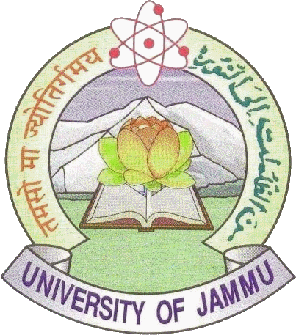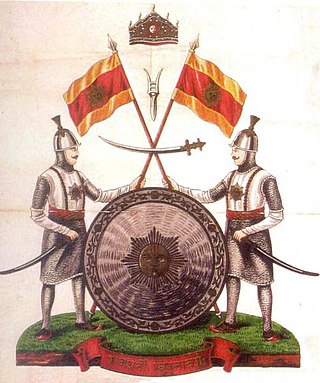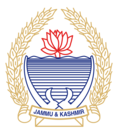
Jammu and Kashmir was a region formerly administered by India as a state from 1952 to 2019, constituting the southern and southeastern portion of the larger Kashmir region, which has been the subject of a dispute between India, Pakistan and China since the mid-20th century. The underlying region of this state were parts of the former princely state of Jammu and Kashmir, whose western districts, now known as Azad Kashmir, and northern territories, now known as Gilgit-Baltistan, are administered by Pakistan. The Aksai Chin region in the east, bordering Tibet, has been under Chinese control since 1962.

Maharaja Sir Hari Singh was the last ruling Maharaja of the princely state of Jammu and Kashmir.

The High Court of Jammu & Kashmir and Ladakh is the common high court for union territories of Jammu and Kashmir and Ladakh. It was established as the High Court of Jammu and Kashmir on 26 March 1928 by the Maharaja of Jammu and Kashmir. The seat of the court shifts between the summer capital Srinagar and winter capital Jammu. The court has a sanctioned judge strength of 17, 13 of whom are permanent judges, and 4 are additional judges. Since 13 February 2023, the chief justice of the court is N. Kotiswar Singh.

Article 370 of the Indian constitution gave special status to Jammu and Kashmir, a region located in the northern part of the Indian subcontinent and part of the larger region of Kashmir which has been the subject of a dispute between India, Pakistan and China since 1947. Jammu and Kashmir was administered by India as a state from 17 November 1952 to 31 October 2019, and Article 370 conferred on it the power to have a separate constitution, a state flag, and autonomy of internal administration.

The University of Jammu informally known as Jammu University (JU), accredited as A+ grade by National Assessment and Accreditation Council (NAAC), was established in 1969 by an act of the state legislature which effectively split the Jammu and Kashmir University into the separate University of Jammu and University of Kashmir.

Ladakh has a long history with evidence of human settlement from as back as 9000 b.c. It has been a crossroad of high Asia for thousands of years and has seen many cultures, empires and technologies born in its neighbours. As a result of these developments Ladakh has imported many traditions and culture from its neighbours and combining them all gave rise to a unique tradition and culture of its own.

Karan Singh is an Indian politician and philosopher. He is the Titular Maharaja of the princely state of Jammu and Kashmir. From 1952 to 1965 he was the Sadr-i-Riyasat (President) of the state of Jammu and Kashmir. He is the chairperson trustee of the Dharmarth Trust of Jammu and Kashmir which maintains 175 temples in north India and works in other areas such as historical preservation.

The Dogra dynasty of Dogra Rajputs from the Shivalik hills created Jammu and Kashmir when all dynastic kingdoms in India were being absorbed by the East India Company. Events led the Sikh Empire to recognise Jammu as a vassal state in 1820, and later the British added Kashmir to Jammu with the Treaty of Amritsar in 1846. The founder of the dynasty, Gulab Singh, was an influential noble in the court of the Sikh emperor Maharaja Ranjit Singh, while his brother Dhian Singh served as the prime minister of the Sikh Empire. Appointed by Ranjit Singh as the hereditary Raja of the Jammu principality, Gulab Singh established his supremacy over all the hill states surrounding the Kashmir Valley. After the First Anglo-Sikh War in 1846, under the terms of the Treaty of Lahore, 1846, the British Indian government acquired Kashmir from the Sikh Empire and transferred it to Gulab Singh, recognising him as an independent maharaja. Thus, Jammu and Kashmir was established as one of the largest princely states in British India, receiving a 21-gun salute for its Maharaja in 1921. It was ruled by Gulab Singh and his descendants till 1947.

The Government of Jammu and Kashmir is the governing authority of the Jammu and Kashmir and its two divisions and 20 districts.
The Jammu and Kashmir Legislative Assembly, also known as the Jammu and Kashmir Vidhan Sabha is the legislature of Indian union territory of Jammu and Kashmir.
Jammu and Kashmir State Ranbir Penal Code or RPC was the main criminal code applicable in the erstwhile Indian state of Jammu and Kashmir. The Indian Penal Code, applicable elsewhere in India, was not applicable here under Article 370 of the Constitution of India.

Girish Chandra Murmu is the 14th Comptroller and Auditor General of India and the external auditor of the Inter-Parliamentary Union. He is also the chairman of the United Nations Panel of External Auditors and the Asian Organization of Supreme Audit Institutions. He is currently the external auditor of the WHO (2020-2023), succeeding the Auditor General of the Philippines. He was the Inaugural Lieutenant Governor of the Union Territory of Jammu and Kashmir till 6 August 2020. He is a retired 1985 batch IAS officer of Gujarat cadre and was principal secretary to Narendra Modi during his tenure as the Chief Minister of Gujarat.

Jammu and Kashmir is a region administered by India as a union territory and consists of the southern portion of the larger Kashmir region, which has been the subject of a dispute between India and Pakistan since 1947 and between India and China since 1959. The Line of Control separates Jammu and Kashmir from the Pakistani-administered territories of Azad Kashmir and Gilgit-Baltistan in the west and north. It lies to the north of the Indian states of Himachal Pradesh and Punjab and to the west of Ladakh which is administered by India as a union territory.

The Jammu and Kashmir Reorganisation Act, 2019 is an act of the parliament of India containing provisions to reconstitute the Indian-administered state of Jammu and Kashmir into two Indian-administered union territories (UTs) called Jammu and Kashmir, and Ladakh, and becoming effective on 31 October 2019. A bill for the act was introduced by the Minister of Home Affairs, Amit Shah, in the Rajya Sabha on 5 August 2019 and was passed on the same day. It was then passed by the Lok Sabha on 6 August 2019 and it received the president's assent on 9 August 2019.

The Emblem of Jammu and Kashmir is an official symbol used to represent the government of Jammu and Kashmir, a region administered by India as a union territory.

On 5 August 2019, the Government of India revoked the special status, or autonomy, granted under Article 370 of the Indian Constitution to Jammu and Kashmir—a region administered by India as a state which consists of the larger part of Kashmir which has been the subject of dispute among India, Pakistan, and China since 1947.

The Administration of Union Territory of Ladakh(sic) is the governing authority of the Indian union territory of Ladakh and its two districts. The Administration is led by a Lieutenant Governor appointed by the President of India who acts on behalf of the central Government of India. Ladakh does not have an elected legislative assembly. The two districts of Ladakh both elect their own autonomous district council-the Leh Autonomous Hill development council and the Kargil Autonomous Hill development Council, which have competence over a range of domestic affairs.


















